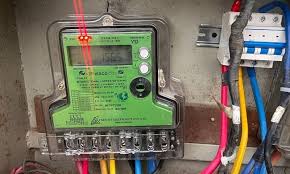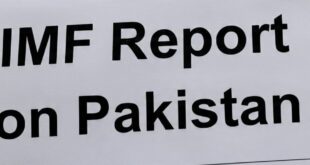
Special Report
In the last week, the news appearing on local media for taxing the solar system and reducing the prices of net metering units has gripped. The solar system users in Pakistan were in total panic and did not know what the government would do with their installed system in the future. It also alarmed bells among the consumers of net metering on solar systems. The users of the solar systems both in urban and rural areas along with commercial were almost in shock. Why the government is taxing this on grid electricity in the country? They have not yet reaped the benefits of this system as most of the users either installed the system just a couple of years ago.
The social media was also littered with critical views suggesting of various comments. Most of them were terming the proposed summary of the federal government for doing this as being the first country in the world for taxing green energy.
According to the proposal of the Central Power Purchase Agency (CPPA) a new solarization policy will aim to bolster the nascent renewable energy (RE) adoption in the urban as well as far-flung areas of the population.
This proposal will significantly reduce the net metering rates by 50 % for consumers in buyback power rates and their capital return timelines. The new proposed rates will be reduced to Rs 11 per unit against the existing average unit rates of Rs 19 per unit. The CPPA in its summary will the Agency to lessen the burden of capacity payments under the head of Fuel Adjustment Charges (FCA) every month by the regulator—NEPRA.
What is net metering?
In Pakistan, a net metering system was introduced by NEPRA for the promotion of green energy sources i.e. solar and wind by the domestic electricity consumers while bagasse, small hydel units by the commercial producers in 2015 under NEPRA (Alternative and Renewable Energy) Distributed Generation and Net Metering Regulation 2015.
The net metering is a system that benefits people earlier using electricity from the national grid. High tariffs in the recent past have switched domestic electricity consumers to install their solar panels on their rooftops. After installing the solar panel, the consumer generates their electricity during the daylight. If he is producing more than his use, the extra energy is sent back to the national grid, and the solar installee receives credits.
These credits are reflected in the consumer’s electricity bill for contributing surplus energy. These credits are used when the solar panel is not working during nighttime. However, these credits are rewarded in the form of cash to the domestic consumers. They will only be cashed when you consume more electricity than generated through your solar panels.
Net metering acts like a small producer and consumer. It is a great way to save money on electricity bills with a high tariff of Rs 42 per unit in a country like Pakistan with plenty of sun shining during the day hours.
Net metering in Pakistan
In a country like Pakistan, its GDP per capita is expected to reach 1730 US $ by the end of 2024, and in 2025, it is projected to trend around 1797 US $ and 1887 US $ in 2026, suggests Trading Economics and Macro Models. High cost of electricity bills mainly owning capacity charges and ever-increasing circular debts have pushed domestic consumers to install solar panels on their rooftops.
Under NEPRA announced the official Distributed Generation and Net Metering Regulations on September 1st, 2015., any customer of the electric grid (three-phase connections) can avail the possibility of Net Metering for small-scale renewable energies installations.
In Pakistan, net metering is the first policy mechanism of the Renewable Energy Act of 2006 which has been fully implemented. Section 8.4.2 of the Renewable Energy Act of 2006 provides that subject to technical considerations and without discrimination and upon request by distribution end-users, DISCOs shall enter into a net-metering agreement with qualified end-users who will be installing the RE system.
According to the Ministry of Energy, the surge in solar consumers underscores the growing popularity of renewable energy solutions, with the number of solar users witnessing a remarkable 60% increase in the past year alone. Presently, the country boasts approximately 150,000 solar consumers, collectively generating 3,000 megawatts of electricity from solar sources.
However, challenges persist, with on-grid consumers bearing an annual burden of Rs110 billion due to net metering arrangements. Furthermore, the monthly net metering units have surged to 550 million, the sources said.
Billing Procedure
According to NEPRA’s Regulation, the procedures are to be adopted for the billing process as;
a. The customer shall receive a monthly net import or net export bill indicating net import or net export to the grid.
b. The meter reader has to capture import & export energy and other billing parameters recorded by the bi-directional meter.
c. In case of a net import bill, the Distributed Generator shall be billed for the net kWh by an applicable tariff.
d. In case, the export energy is more than the import, the net kWh shall be credited against the Distributed Generator next billing cycle.
e. And on next month if the exported energy is again more than the imported energy, the net kWh shall be credited against the next billing cycle unless the net energy exported is more quarterly (in 3 months), the off-peak net kWh shall be paid to the Distributed Generator by the DISCOs.
f. NEPRA’s regulations for net metering clearly state the netting of electricity units at off-peak rates. Whether the consumer supplies units during off-peak or peak time, the units and rates the DISCOs will use for netting the units and electricity bill will be the off-peak time units and rates.
g. Calculation of Sales Tax on the sale of electricity is to be done on net electricity units. This is because consumers and DISCOs are trading the electricity units. In accounting terms, both are liable for Sales Tax.
One way of settling Sales Tax is that both parties may settle their Sales Tax on their own, which is cumbersome and much difficult for the consumers to handle. The easy way is that the net of electricity units be calculated and the party having supplied surplus units may be liable for Sales Tax settlement.
In most cases (because of solar PV/micro wind system sizes and consumption of electricity by the consumers), it would be the DISCOs who would have supplied more units and therefore would have to collect Sales Tax from the consumers, based on net electricity units.
The Sales Tax would be calculated for off-peak and peak units separately, calculations for Sales Tax of only off-peak billed units will be used for netting off.
h. Calculations of other surcharges or tariff rationalization charges etc. should be done based on total electricity units supplied by the DISCOs. This is because NEPRA regulations allow the netting of electricity units at off-peak rates only. Surcharges or tariff rationalization charges etc. do not fall in calculations of netting of off-peak electricity units.
Way forward of solarization in Pakistan
Pakistan has tremendous potential for solar energy due to abundant sunshine. To make solar panels a success story in Pakistan, a multi-pronged approach is needed, addressing factors like affordability, awareness, infrastructure, and policy:
Affordability:
Expand access to financing schemes like soft loans, subsidies, or microloans, especially for residential and small-scale projects.
Consider temporary reductions in import duties on solar panels and related equipment to bring down initial costs.
Encourage local manufacturing of solar panels to create jobs, reduce reliance on imports, and potentially lower costs in the long run.
Awareness and Education:
Educate the public about the benefits of solar energy, focusing on cost savings, energy independence, and environmental impact.
Offer training programs for installers and technicians to ensure qualified professionals handle installations and maintenance.
Showcase successful case studies of individuals, businesses, or communities that have benefited from solar adoption.
Infrastructure and Support:
Streamline net metering regulations and ensure fair compensation for excess solar energy fed back to the grid.
Invest in modernizing the national grid to better handle the integration of large-scale solar power generation.
Establish a network of reliable after-sales support for repairs, maintenance, and troubleshooting of solar systems.
Policy and Incentives:
Provide tax breaks or exemptions for individuals and businesses who invest in solar panel systems.
Set ambitious but achievable national renewable energy targets with a specific focus on solar power.
Simplify the permitting process for installing solar panels, reducing bureaucratic hurdles.
Additionally:
Encourage research and development in solar technology to improve the efficiency and affordability of solar panels.
Promote community solar projects where multiple households share a single solar installation, making it accessible to those with limited space or resources.
By implementing these strategies, Pakistan can create a thriving solar energy sector, empowering citizens, businesses, and the environment. Solar panels can become not just a source of clean energy, but a driver of economic growth and energy security for the nation.
 BeNewz
BeNewz




